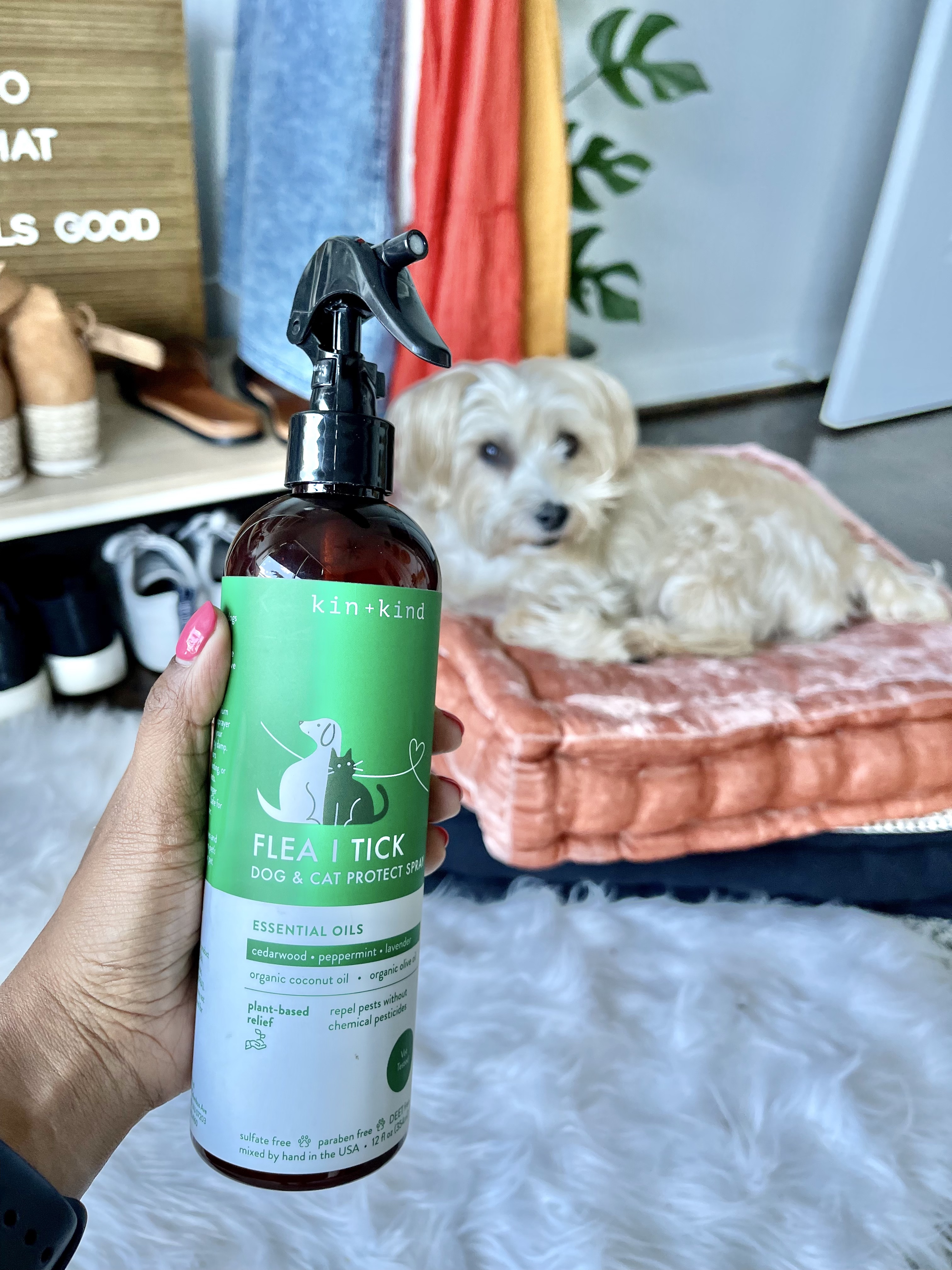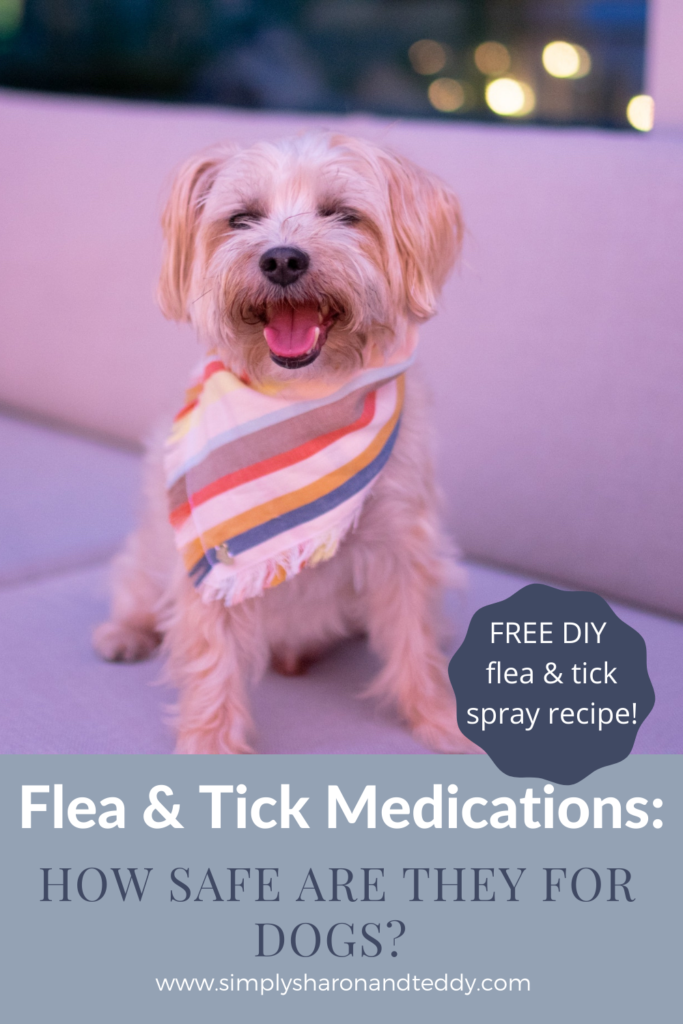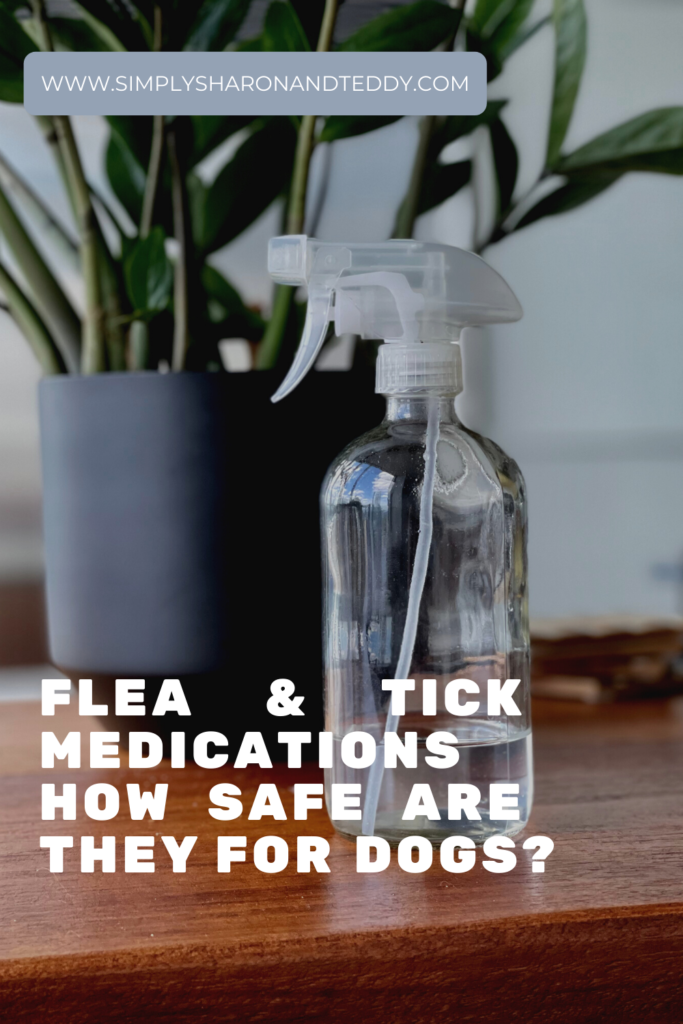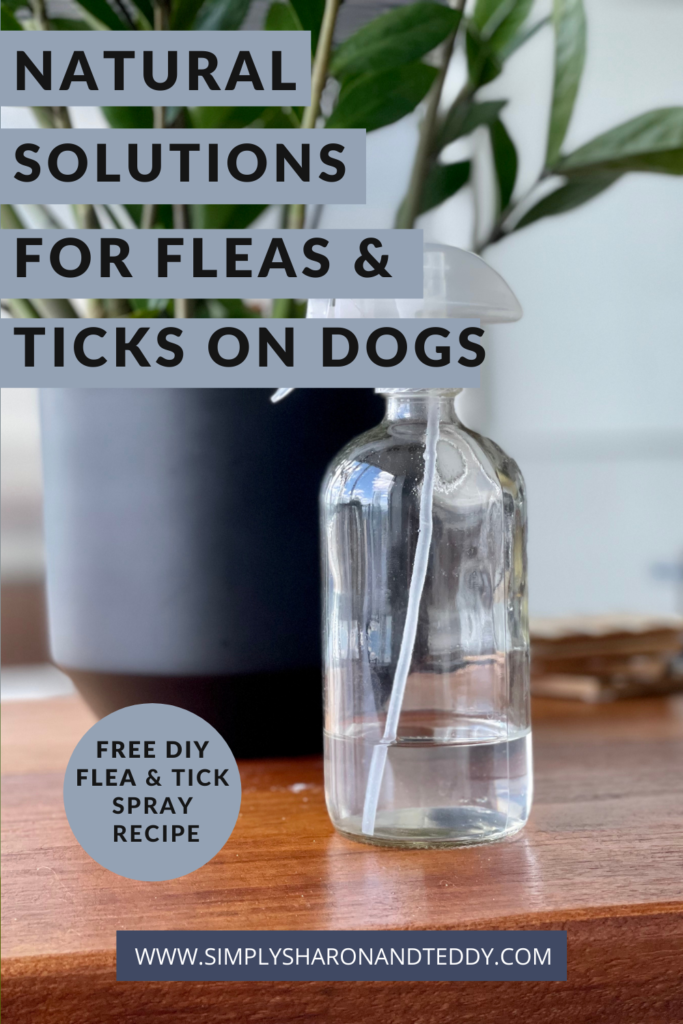As responsible pet owners, it can be difficult to choose a safe way to protect our dogs from fleas and ticks. On one hand these bugs can transmit harmful diseases to our pets. And on the other hand the flea and tick medications used to safe guard our dogs can be full of chemicals that are harmful to both pets and people. How do we determine if the flea and tick medication we use is safe for our dogs? We can educate ourselves about the risks and benefits of various treatment options and pick the safest for our lifestyle.
As a pet owner, I was encouraged to use topical flea and tick medication. I used it for years until Teddy started showing signs of skin irritation that was making him hypersensitive. I immediately stopped using the medication, consulted my veterinarian and decided to use a more natural route that is safest for my dog. Each pet owner’s decision will be different as each of us balance the risk and benefits.
Below you will find information on why dogs need flea and tick medications. How different types of flea and tick medications work and their potential side effects. And the safest and most effective flea and tick medications for dogs. With this information you will be able to determine which flea and tick medication is safest for your dog.
DISCLAIMER
Please consult your veterinarian before making any changes to your pet’s medications and discuss what options are best for you and your dog. I am not a vet and I am not making any recommendations. I encourage you to learn more and make your own decisions.
The Safest And Most Effective Flea & Tick Medications For Dogs.

Why Do Dogs Need Flea & Tick Medications?
Are you wondering if you should give your dog flea and tick medications? Deadly diseases are carried by these bugs and can be passed onto people and pets. As the weather gets warmer, more of them emerge out of hibernation and start feeding again. These animals are bloodsuckers and hitch a hike on our pets. Fleas spread diseases and are the leading cause of tapeworms in dogs that can cause abdominal pain, vomiting and diarrhea. Treatment of tapeworms in dogs includes parasitic medications. Ticks can transmit diseases such as Lyme disease, Rocky Mountain Spotted Fever, Ehrlichiosis and many other serious diseases that you can find here. The symptoms of Lyme disease can take months to show and can start as non-specific symptoms such as muscle or joint pain and progress to kidney failure. Treatment of Lyme disease includes antibiotics. For these reasons, it’s important to protect your pets using preventative flea & tick medications.
Learn how to safely remove ticks from your dog here.
How The Different Types Of Flea & Tick Medications Work + Their Side Effects.
There are many different options when it comes to flea and tick medications including topical, oral, spray, shampoos and collars. They each have different active ingredients causing them to work differently and making some safer than others.
Oral Flea And Tick Preventatives
Dogs take oral medication as a chewable treat and it contains the drug class isoxazolines. This drug is absorbed into the blood stream of your dog. Being bloodsuckers, fleas and ticks will then suck the dog’s blood and eat the chemicals. Isoxazoline based oral medications work on fleas and ticks by blocking nerve signals and killing them. This drug class appears under different names such as Fluralaner and Lotilaner. The chews may last monthly or yearly depending on the time frame it stays in your dog’s body. Pet owners have reported side effects to the Environmental Protection Agency such as: seizures, tremors, vomiting, diarrhea, skin irritation and loss of appetite.
Topical Flea And Tick Preventatives
Topical flea and tick medications are applied directly to your dog’s back. The active ingredient is an insecticide and is absorbed into the skin. Depending on the active ingredients, it can circulate into the bloodstream or move to the dog’s sebaceous glands. Fipronil, found in Frontline, settles in the sebaceous glands with a small amount may enter the bloodstream. Imidacloprid, found in Advantage and Advantix, doesn’t enter the blood stream. Documented side effects of topical preventatives may include skin irritations, dermatitis, neurological issues.
Flea And Tick Collars
Dogs may wear flea and tick collars for varying lengths of times. The active ingredient is an insecticide that is absorbed through the skin to the bloodstream. Side effects can include seizures, tremors, vomiting and hypersensitivity to touch to name a few.
Flea And Tick Shampoos
Use flea and tick shampoos as a secondary line of defense. The active ingredients can be Permethrins (insecticide) or be more natural with ingredients such as aloe and shea butter.
Flea And Tick Sprays
The ingredients in flea any tick sprays range from containing ingredients with insecticides to more natural sprays containing essential oils.
Is It Safe To Use Flea & Tick Medications On Dogs?
The safety of flea and tick medications has been a controversial hot topic for years now with new investigations and reports occurring yearly. The most recent investigation done by USA Today in March of 2021 revealed the popular flea and tick collar Seresto has been linked to 1,698 related pet deaths and more than 75,000 incident reports with about 1000 of them involving humans according to the Environmental Protection Agency.
In 2018, the U.S. Food and Drug Administration alerted pet owners and veterinarians to be aware of neurologic adverse events in dogs and cats when treated with drugs that are in the isoxazoline class. The FDA claimed to be “working with manufacturers of isoxazoline products to include new label information to highlight neurologic events.” This included brand names such as Bravecto, Revolution Plus, Credelio, Nexgard and Simparica to name a few. These medications poison and kill the flea and ticks. The problem is that our pets are ingesting the poison as well in small doses and some pets are showing neurologic symptoms as a response.
Unfortunately, the Environmental Protection Agency hasn’t done much to alert the public. Unless you do your own research or your dog suffer’s from the side effects, you may never know about the potential harm. You should even be wary of natural products as they may not work or your pet may be allergic to the ingredients.
If you have experienced negative side effects, I encourage you to report cases to the manufacture of the product or the FDA.
Natural Solutions For Fleas and Ticks on Dogs.
There are many easy and nontoxic steps you can take to control fleas and ticks. I recommend including regular grooms, cleaning your home and taking preemptive steps in your yard by using nematodes, worms that eat flea larvae. Throughly check your dog for fleas and ticks after each outing. Other natural solutions include adding foods such as garlic and apple cider vinegar to your pet’s diet. Also consider using essential oil sprays such as this one from Kin + Kind or make one yourself. Get my free DIY natural flea and tick spray recipe below! Please remember to dilute essential oils before using it on your dog. If chemical products are necessary, consider less toxic ingredients such as s-methoprene or pyriproxyfen.
What Flea & Tick Medication Is Safest And Effective?
Balancing the safety of flea and tick medications and the repercussions of symptoms caused by diseases transmitted by flea and ticks can be difficult. When choosing the safest and most effective flea and tick medication, each pet owner will need to consider a few things: their pet’s lifestyle and exposure to these bugs, what parasites are commonly found where they live, their pet’s coat type and most importantly their pet’s health history. Another important factor to consider is young children that can be exposed to the chemicals of collars and topical treatments. Starting with nontoxic steps and adding on chemicals as needed is the safest approach. Since no two scenarios are the same. The safest and most effective flea and tick medication will be different for each pet owner.











Leave a Reply